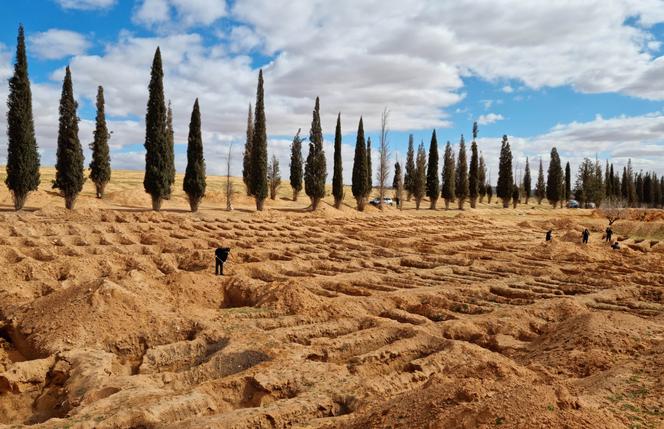


The small town of Tarhuna, 90 kilometers south of Tripoli, tells the story of a Libya that has been in the grip of a never-ending transition for 12 years: Dubious alliances with various foreign powers, the reign of an all-powerful militia and civilians caught in a vice. In the absence of justice, and with the total impunity that characterizes the post-Gaddafi era, the cycles of violence follow one another like an endless vendetta.
For 10 years, Tarhuna in Tripolitania, which supported Muammar Gaddafi during the revolution, suffered the terror of a revolutionary militia, associated in turn with the Western government recognized by the international community and the military power of Cyrenaica led by Marshal Khalifa Haftar. The "Kaniyat," the militia of the powerful Kani brothers, crowned by their success in the "February 17th movement" (2011 revolution), gradually extended their hold to all spheres of the city, effectively setting up a kind of dictatorial, autonomous mini-state, with its own police force, prison system, judiciary, and parallel economy.
It was only after Haftar's failed attempt to conquer Tripoli in 2020 that the forces of the "Volcano of Anger," the coalition that had defended the capital, discovered the first mass graves in Tarhuna containing the bodies of 100s of people, most of them civilians. The bodies bore signs of torture: Hands were tied, bullets had been fired into the head or torso, genitals mutilated. The remains of children, women, and entire families, whose bodies had been thrown together, were found. Victims were often buried alive.
Little by little, the truth about the years of terror endured is beginning to emerge. With so many dead, it was often sub-Saharan migrants, forcibly conscripted, who dumped the bodies in mass graves during the night. Others were abandoned in the city's public rubbish dump, most of them unidentified. Torture raged in official and unofficial detention centers. Farms, factories, and garages were used as prisons, where enemies of the Kani were sometimes locked up in cubes less than one square meter in size, which the guards heated by piling burning ashes on the roof. Four years on, and despite investigations by the International Criminal Court and the UN, no one responsible has yet been brought to trial.
The reasons for this impunity are diverse, but they lie neither in a lack of resources nor in a lack of information. Those responsible are well known, identified, and were listed by a UN commission of inquiry in its final report published on March 23, and by victims' associations. They are to be found in the Kani brothers' various alliances and supporters, for the charge of crimes against humanity includes command responsibility, including omission or failure to prevent violations.
You have 60% of this article left to read. The rest is for subscribers only.
